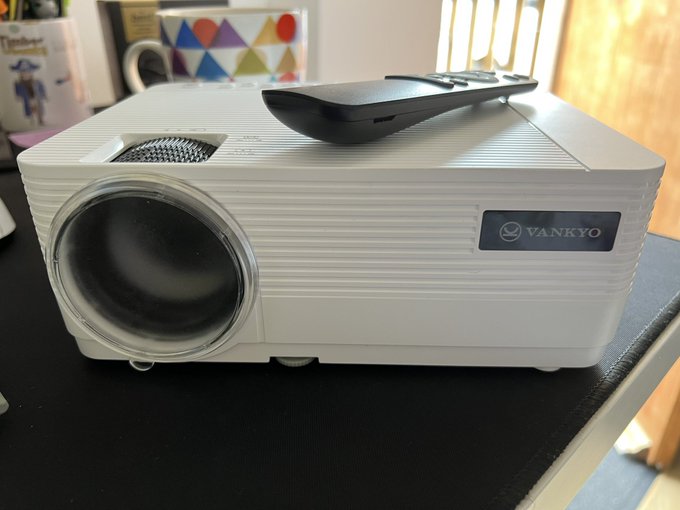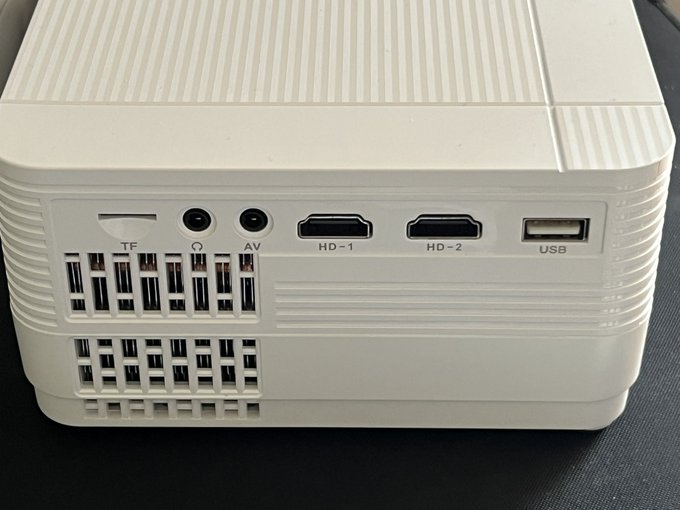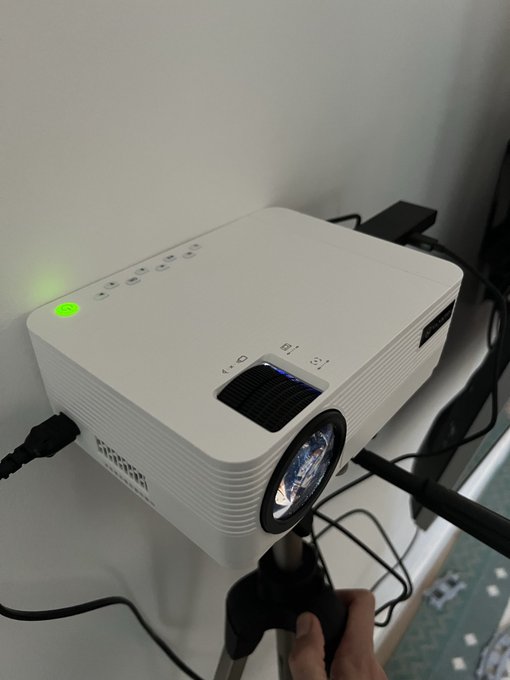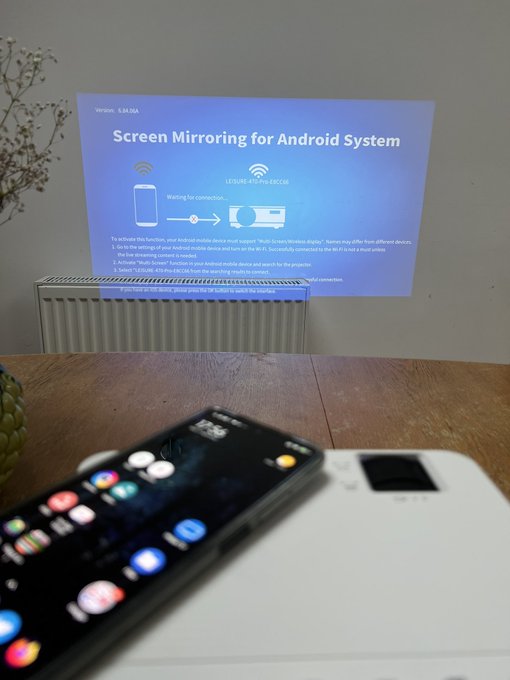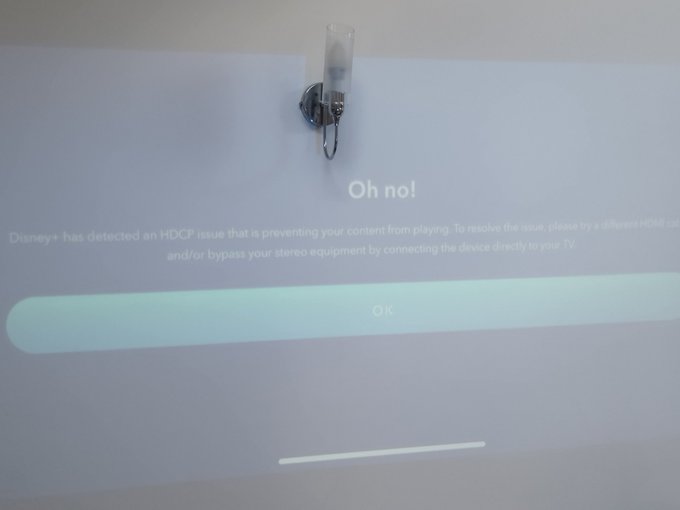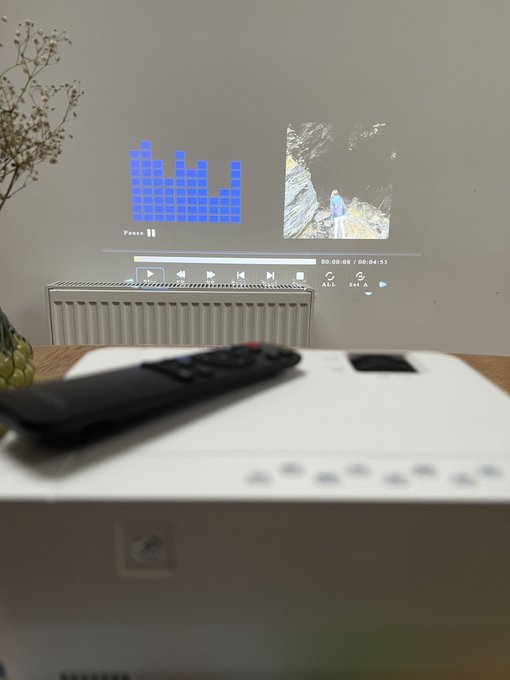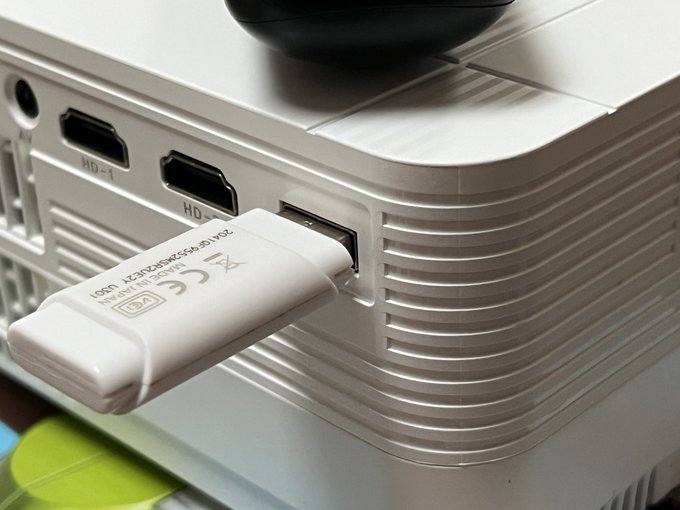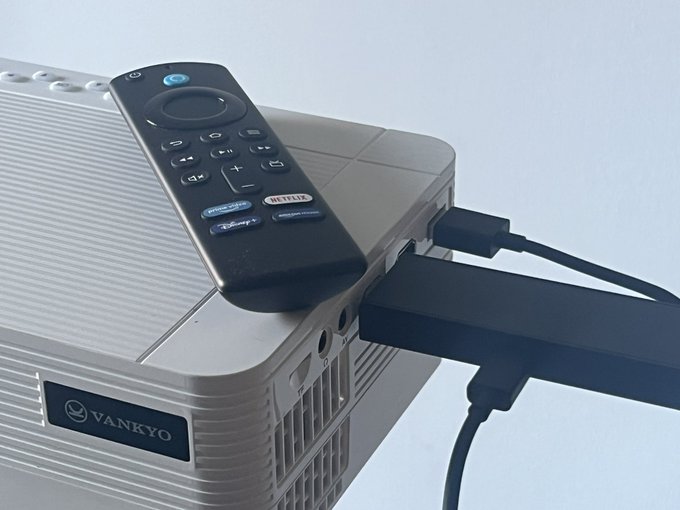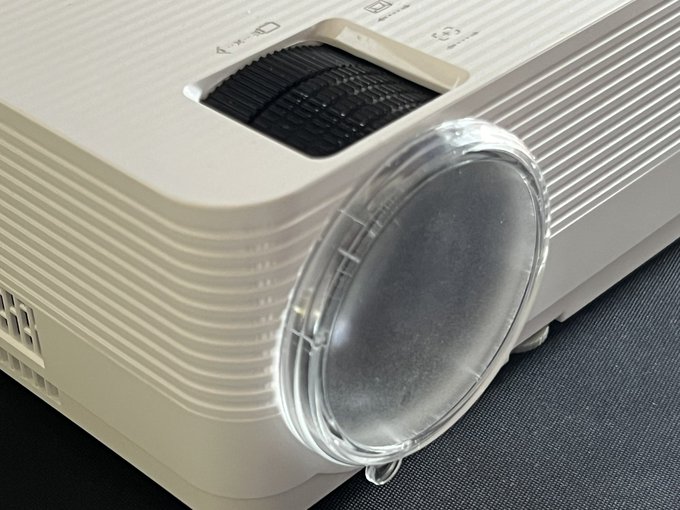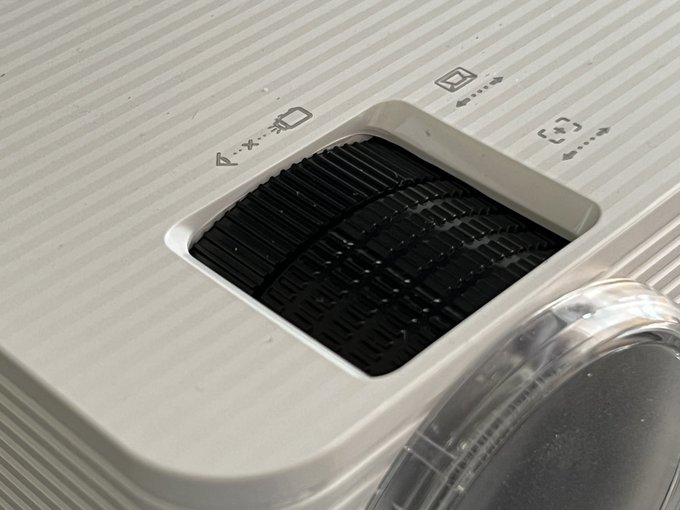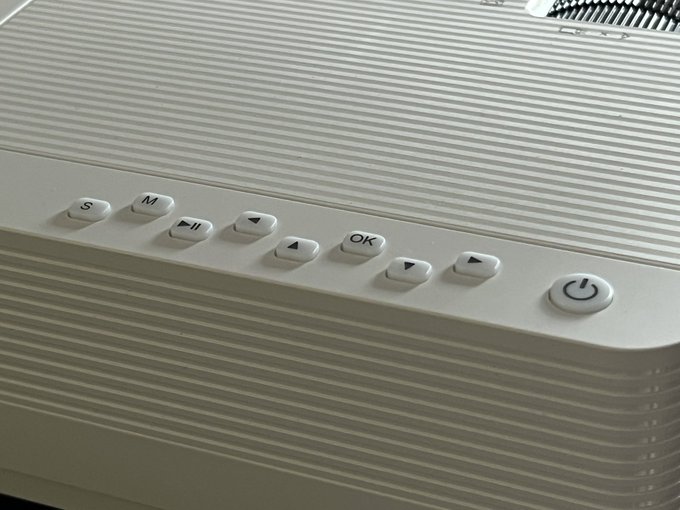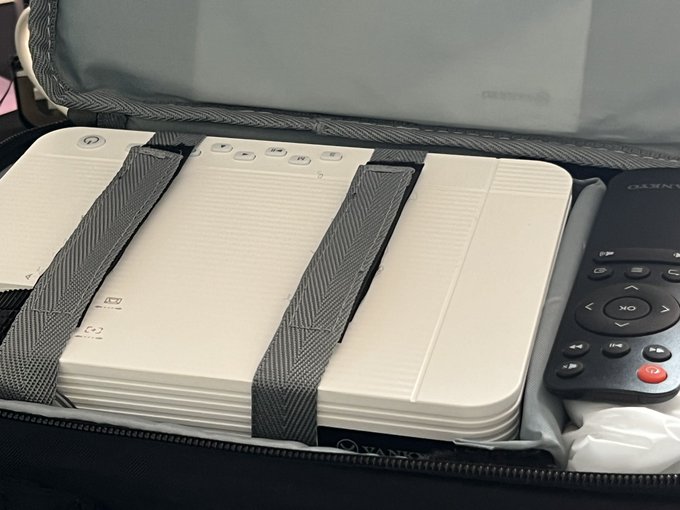Vankyo Leisure 470 Pro Projector Reviewed
The Vankyo 470 Pro – my head-cannon is that the “Pro” is short for “Projector”, but it’s actually the upgraded “Professional” version of the Vankyo 470 – is a low cost, compact projector from Shenzen VanTop Technology & Innovation Co. Ltd. It has very little in the way of smarts, but does a surprisingly respectable job of playing external content – be it via HDMI, USB or wireless casting – with decent picture and sound quality.
On the whole not bad though. Not great. But not bad. pic.twitter.com/GSfMM3ykRm
— Phil Howard (@Gadgetoid) September 26, 2022
At first glance the Vankyo Leisure 470 Pro is deeply uninspiring. It looks and feels cheap- perhaps because it *is* cheap- and sports a very busy design that’s sorely lacking in intent. To be frank, it’s ugly and feels like an anachronism in a modern world of sleek, minimalist, metallic products. It’s very much the antithesis of projectors like the Wemax Go Advanced, and not just visually either. The 470 Pro goes for $170 at time of writing putting it firmly at the “this is so cheap I’m suspicious it’ll even work at all” end of the spectrum. I think it would be utterly within reason to think of the 470 Pro as a toy. A little box of magic to throw up a movie – of questionable origin – for the kids.
I was suspicious. The price of the Vankyo 470 Pro made me think “Do I really want to waste my time writing about this?” I rolled the dice. I am… pleasantly surprised.
IO, IO it’s off to work we go
The 470 Pro sports two HDMI ports which I find thoroughly optimistic. That’s one for your Amazon TV doodad or Chromecast and one spare for more occasional use. These are joined by a 3.5mm analogue TRRS jack for composite video (I don’t think I’ve used that in a decade or two), an HDMI port (for power or USB storage), a microSD “Transflash” slot and a 3.5mm audio out TRS jack for weirdos who still have wired headphones.
Lots of inputs though… pic.twitter.com/O7a9yjUkIW
— Phil Howard (@Gadgetoid) September 26, 2022
The A/V options are pretty run of the mill, so let’s skip over to USB. The USB port supports external storage and the projector has a very basic media browser built in. It has about the same level of visual appeal as the projector itself, but works well enough as a way to browse to and launch the movie or music you want to play. Photos and text are also supported… but I have no inclination whatsoever to try either. The same is all true of the “Transflash” slot, giving you a handy way to stick a microSD card full of content into the projector for your kids without the whoops-I-snapped-off-the-port risk of a larger USB stick. (I did that once with a wireless keyboard and mouse dongle plugged into the front of a desktop computer I was tipping forward to find a port. Oops).
Also totally missed that you can push the Vankyo 470 Pro flat against the wall because the ports escape sideways. Really really useful if you want to stick a shelf above your bed or sofa to hit the adjacent wall. pic.twitter.com/W3p9rgM2Xs
— Phil Howard (@Gadgetoid) October 11, 2022
Perhaps the best feature of the 470 Pro’s ports is that they escape sideways. This may seem silly at first, but it means you can push the projector flush against a wall. Very useful if you want to mount a floating shelf above your sofa and bed to house the projector, and don’t want to deal with inflexible HDMI cables or stick-out HDMI dongles making your shelf requirements silly. Bear in mind that the throw ratio is fixed (you can’t zoom the image) so your wall size and bedroom width have to be just right to make this work.
Mirror mirror on the wall
While the Vankyo 470 Pro is very short on smarts, it has a wireless casting “module” that leverages the projectors internal WiFi chip (indeed the only way you can use WiFi is with casting) to allow media casting from iOS or Android.
And here’s the setup screen for casting. I couldn’t be bothered to set up a tripod! pic.twitter.com/OmrZBKXNWD
— Phil Howard (@Gadgetoid) September 21, 2022
In practice this feature is a mixed bag. Android works quite well, is relatively easy to set up and connect – in fact whatever multi-point WiFi connectivity stuff it does is not far shy of magic – and – unlike my experience with iOS – actually works. Take “works” with a pinch of salt, however, since DRM-encumbered apps like Netflix and Disney+ will flatly refuse to play any video to the projector. YouTube Vanced and VLC worked well, and that should give you a hint about the type of person coughpiratecough who would be interested in this projector.
Well hmm pic.twitter.com/GLq5VH4c9v
— Phil Howard (@Gadgetoid) September 16, 2022
Latency when casting from Android is roughly 300ms. You probably could play Android games with a .3s delay; but you’re probably not going to want to.
iOS casting was an unmitigated disaster. I couldn’t get video from the iOS versions YouTube or VLC, although – for what it’s worth – sound worked. This is, I’m told, due to Apple’s rather strict DRM policy which requires content protection for *all* video playback and not just apps like Netflix or Disney+.
In iOS mode you must connect directly to the projector via WiFi which, as standard, gives you basically no network connection on your phone to actually play content. If playing content worked this would be a problem. But it doesn’t. So I guess it’s not. Suffice to say if you’re an iPhone user and casting/screen mirroring is a headline feature… you’ll want to give this thing a miss.
It’s worth noting that – while connected directly in iOS mode – you can browse to http://192.168.49.1 and edit some projector settings in your web browser. This includes connecting directly to a custom wireless network, so you can cast and also get internet access on your phone. This would be great if casting worked. But it doesn’t. So it’s not.
In all cases the WiFi is disconnected as soon as you switch to any other input. This is not a smart projector.
I’m not really sure why there’s iOS casting at all, since the Venn diagram of people buying a £1000 smartphone and a £100 projector has got to be two different circles. Vankyo, if you’re listening, chuck this feature and give me a 1A USB port, please!
All Smiles And Songs
The internal speakers are surprisingly good! Bass is pretty much non-existent, but the mids are present enough that it doesn’t sound tinny and frail despite – as far as I can tell- only having one, small speaker. At louder volumes it can be prone to distorting during louder parts of music or movies, but it usually doesn’t need turning up. You probably don’t want to listen to music on it, but it’s fine for TV viewing.
Playing some @Sabrepulse from a USB drive. Sound is surprisingly good. Has some bass punch. Colour me surprised! Drowns the fan noise out quite handily ??? pic.twitter.com/ySK1BnkG3B
— Phil Howard (@Gadgetoid) September 21, 2022
Nothing Must Be Overlooked
On the subject of sound we come to the elephant in the room. Or the fan, in any case. It may be unsurprising to hear that the Vankyo 470 Pro fan is considerably noisier than that in any other compact projector I’ve tested. It’s far, far too loud to be usable at night with modest volume levels (bearing in mind I am quite hard of hearing) and is accompanied by a roughly 500Hz continuous tone that will unravel your nerves if you tune into it.
During daylight hours- ironically when it’s less easy to use a projector- and with the bustle of a household to drown out the fan noise, it’s quite tolerable. Whether you’re bothered or not will be a function of your susceptibility to noise and just where you plan to use the projector.
Baby’s On Fire
Where the Vankyo 470 Pro really excelled was with the addition of an Amazon Fire TV stick. I picked up a 1080p one on sale – putting my hard-earned £25 on the line to give Vankyo’s projectors a fair shake – and set about testing it with the 470 Pro.
Cheap addition of a Fire TV stick makes this $170 Vankyo projector a heck of a thing for the price. Real shame about the fan noise, but a loud Bluetooth speaker should help immensely. Home cinema on a shoe string budget? ? pic.twitter.com/2iblFejDb5
— Phil Howard (@Gadgetoid) October 11, 2022
The good news is that it’s possible to *just about* power the Amazon Fire TV from the projector’s USB port. I had to complete the initial setup and updates on an external power supply, since I ran into weirdness with the Fire TV remote not pairing. But once I had set the stick up, pretty much all of the media applications I could care to use didn’t exceed the 500mA rating of the port- even though it’s possible for the Fire TV stick to use more (and in some cases crash or brown-out).
Getting audio to work required manually changing the Fire TV stick’s “Surround Sound” mode to PCM, but that was easy enough.
With some added smarts and a decent UI the viewing experience is significantly better. While the 470 Pro doesn’t have the most compelling of UI, the picture is very, very watchable and the slightly soft effect of a physical lens assembly and traditional bulb projection actually ends up looking nicer than the harsh sharpness of an entry level laser projector.
And – unlike casting – apps like Disney+ and Netflix work fine on the Fire TV, which connects via HDMI.
Possibly the best part of using a Fire TV stick powered by the projector is that it boots up when the projector is powered. This results a near seamless experience where powering up the projector will immediately launch into Fire TV. It feels almost built-in.
Unfortunately I could not get the volume controls on the Amazon Fire TV remote to control the Vankyo 470 Pro volume. That would have rounded off the setup nicely.
In Conclusion
The projector reviewed had a model No of A01002 with an FCC ID of 2AQ3A-V630W. The firmware version was RJ53V624.CC.220713 (July 2022, presumably) and the user-manual seems to be this one – https://cdn.shopifycdn.net/s/files/1/0268/7015/3313/files/mini_Leisure_470_Leisure_D70T_Leisure_D70Q_V1.02_EN.pdf?v=1622015868 – which is not the same as the one linked from the Vankyo website. Vankyo insist that it’s https://cdn.shopify.com/s/files/1/0268/7015/3313/files/Leisure_470_Pro_Manual.pdf?v=1658141239 but the screenshots differ from the interface I see when firing up the 470 Pro. As such I can’t test the updated UI on this model, although I have a 475W which seems to have the same UI.
A figure-eight cable (C7) was supplied, but with Euro prongs on it that wont jam into our UK sockets. If – like me – you have a box of cables with spare C7s coming out of your ears, you’ll be fine. An interesting aside to this is that the power supply for the projector is integrated. It takes 240v right into the side and no doubt this necessitates some extra cooling considerations. While this means there’s no extra bulky brick to carry around, I think I’d prefer an external power supply for safety, and just to – maybe – reduce the projector fan noise.
I said the Vankyo 470 Pro design lacked “intent.” The remote buttons mirrored along its back edge is a good example of this. They are arranged in a line which makes it very difficult to intuit their function at a glance. A more considered design would arrange the 5-way nav into something resembling a 5-way nav.
The Vankyo 470 Pro is staring me down from the side of my desk. It’s not the prettiest piece of tech to arrive on 2022 current year argument ? pic.twitter.com/8tFn1kxNAU
— Phil Howard (@Gadgetoid) September 26, 2022
Focus and keystone are entirely manual, achieved by rotating the wheels around the lens assembly. Focus physically moves the lens forward/backward, and you must retract it fully before the lens cap will fit back on. I found it quite easy to achieve a comfortable focus and keystone setup, and appreciated the analogueness of things. Unlike 4D keystoning in a wizzbang smart projector, the manual method doesn’t add latency, doesn’t lose effective resolution and doesn’t result in jagged, aliased edges around the screen or high contrast lines. I wish more portable projectors used some kind of optomechanical assembly to achieve at least part of their keystoning with physics tricks instead of software tricks.
The downside of a single keystone dimension is that your projector must always be set up square to your wall for the best picture results. This isn’t always easy if you’re not planning to ceiling mount.
Yes, there is a 1/8” thread mount in the bottom for mounting on a tripod.
The low cost makes it really easy to forgive the jankiness of the Vankyo 470 Pro. It pretty much excels at producing a decent image and good enough sound and is a great little projector to keep the kids entertained in whatever room (with enough spare wall space) they happen to be lounging.
Vankyo even throw in a carrying bag to sweeten the deal. Not bad.
And a carry case! pic.twitter.com/814wGlqKU6
— Phil Howard (@Gadgetoid) September 26, 2022
In short the Vankyo 470 Pro is very aggressively priced, a little bit janky, seems to differ slightly from the product page (I think I have the older version, rather than the slightly improved never version, but I remain unsure), and not all of the features quite work how you’d expect. But its core premise- make your wall into a TV screen- is solid, and it’s pretty good if you can ignore the shortcomings. In fact it would be fair to say the Vankyo 470 Pro exceeded my expectations, and for the price – a paltry $170 – it’s really quite good.
With the addition of a Fire TV and a Bluetooh Speaker it would make a great budget home theater setup. With the curtains closed I was able to throw a watchable, if a little dim with some vignetting on the edges, 100″ screen. Your kids aren’t going to notice and will be blown away. I know my toddler loves it.
